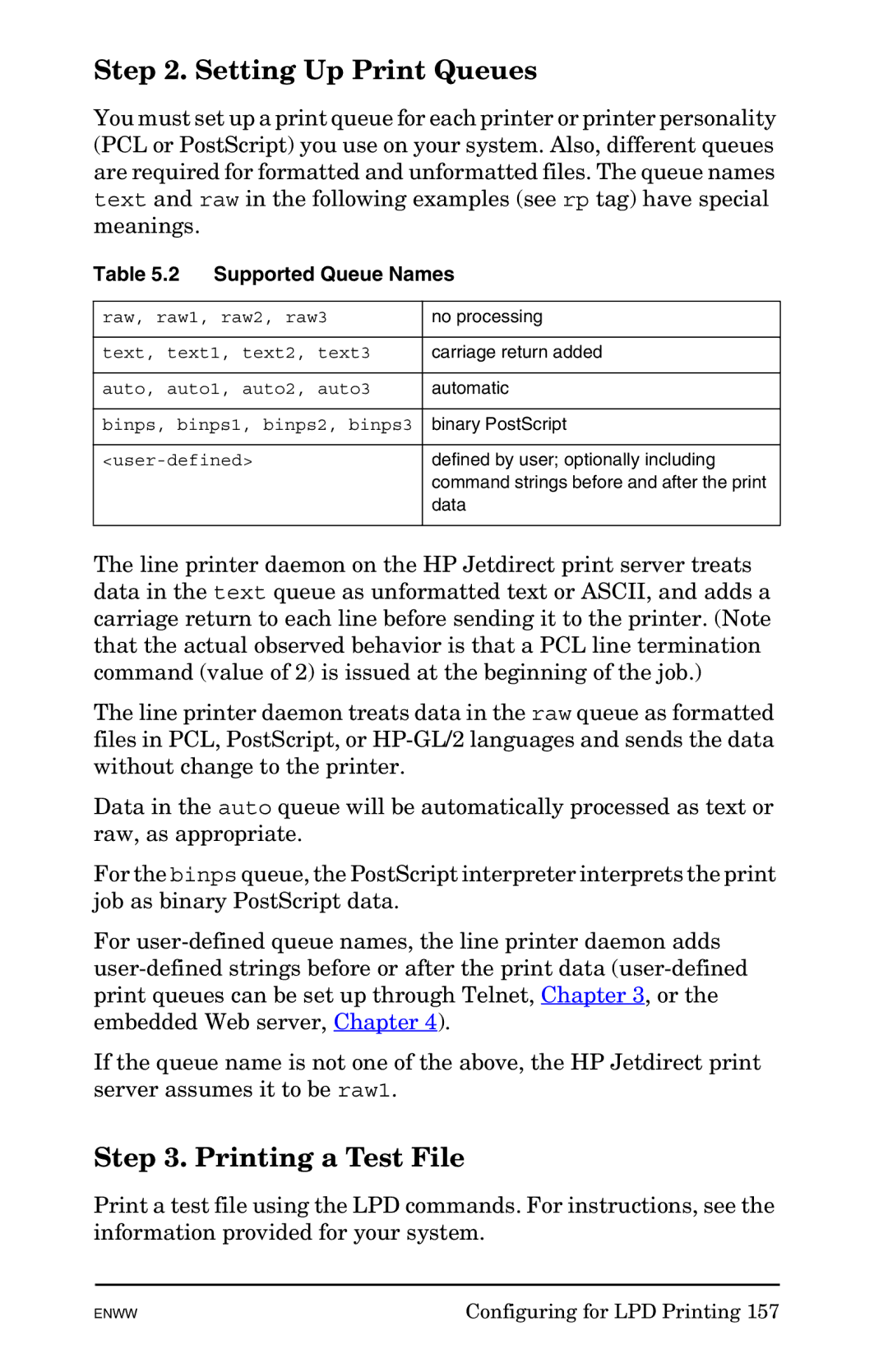Step 2. Setting Up Print Queues
You must set up a print queue for each printer or printer personality (PCL or PostScript) you use on your system. Also, different queues are required for formatted and unformatted files. The queue names text and raw in the following examples (see rp tag) have special meanings.
Table 5.2 | Supported Queue Names | |
|
| |
raw, raw1, raw2, raw3 | no processing | |
|
| |
text, text1, text2, text3 | carriage return added | |
|
| |
auto, auto1, auto2, auto3 | automatic | |
|
| |
binps, binps1, binps2, binps3 | binary PostScript | |
|
| |
defined by user; optionally including | ||
|
| command strings before and after the print |
|
| data |
|
|
|
The line printer daemon on the HP Jetdirect print server treats data in the text queue as unformatted text or ASCII, and adds a carriage return to each line before sending it to the printer. (Note that the actual observed behavior is that a PCL line termination command (value of 2) is issued at the beginning of the job.)
The line printer daemon treats data in the raw queue as formatted files in PCL, PostScript, or
Data in the auto queue will be automatically processed as text or raw, as appropriate.
For the binps queue, the PostScript interpreter interprets the print job as binary PostScript data.
For
If the queue name is not one of the above, the HP Jetdirect print server assumes it to be raw1.
Step 3. Printing a Test File
Print a test file using the LPD commands. For instructions, see the information provided for your system.
ENWW | Configuring for LPD Printing 157 |
